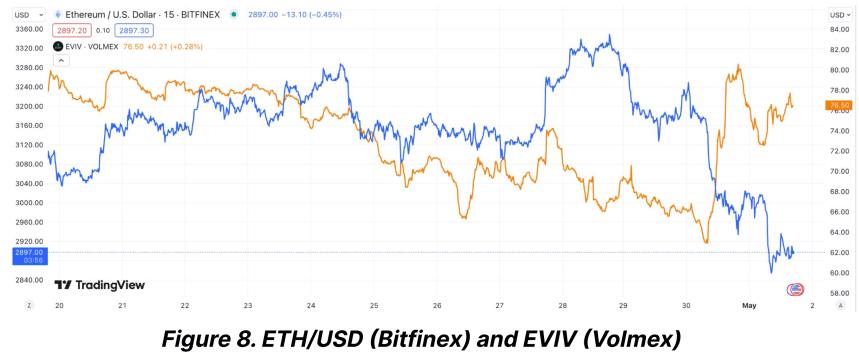Ethereum
Here’s What ETH Implied Volatility Tells Us — TradingView News

The cryptocurrency market has recently shown distinct divergences in the behavior of its two main assets, Bitcoin and Ethereum. While Bitcoin appears to be entering a phase of relative stability, Ethereum’s journey paints a mixed picture of continued uncertainty, particularly in its options market.
This divergence is highlighted by the sustained high levels of implied volatility associated with Ethereum options, signaling a cautious outlook on future price action from investors.
Ethereum’s Persistent Volatility: A Comparative Analysis
Implied volatility (IV) is a crucial indicator in the options market, providing insight into expected fluctuations in an asset’s price over a specific time period. It reflects market temperature, assessing the intensity of potential price movements anticipated by traders.
Recent analysis suggests that while Bitcoin’s implied volatility has significantly stabilized after the halving, Ethereum’s has not followed suit. While Bitcoin’s IV has fallen to its lowest level in several months, indicating a calm market, Ethereum’s IV remains stubbornly high.
Unlike the calming waves of the Bitcoin market, Ethereum is struggling with increased volatility. According to data from the Bitfinex Alpha Report, Bitcoin’s volatility index has declined sharply from 72% at the time of its last halving event to around 55%.
NewsBTC
In contrast, Ethereum saw a more modest reduction in its volatility index, dropping from 76% to 65% over the same period. This continued volatility in the Ethereum market is primarily fueled by uncertainties surrounding upcoming significant regulatory decisions and broader market implications.

The Ethereum market is particularly nervous in anticipation of the US Securities and Exchange Commission’s (SEC) impending decision on two Ethereum spot ETFs, scheduled for late May 2024.
This upcoming regulatory step is considered a critical event that could either catalyze a major market move or exacerbate current volatility.
The Bitfinex Alpha report highlights regulatory uncertainty as one of the main factors behind Ethereum’s volatility risk premium (VRP) falling less significantly compared to Bitcoin.
ETH and BTC Show Signs of Recovery Amid Volatility
Ethereum and Bitcoin have shown signs of recovery over the past week in terms of trading performance. Bitcoin saw an increase of 4.1%, while Ethereum reported a more modest gain of 2.4%.
However, the last 24 hours have been less favorable for Ethereum, with a slight decline of 0.7%, highlighting the current volatility and caution among investors.
Additionally, Ethereum’s network dynamics also reflect moderate activity with a marked decrease in the ETH consumption rate attributed to reduced transaction fees.
This technical aspect further complements a cautious narrative of the Ethereum market, poised to undergo potentially significant changes based on external regulatory actions.
Despite all this, analysts like Ashcrypto suggest that the current volatility could pave the way for a strong rebound in the third quarter of the year. Building on historical trends, speculative predictions for Ethereum could reach the $4,000 mark, provided market conditions align favorably.
Featured image from Unsplash, chart from TradingView
